- News
- Reviews
- Bikes
- Components
- Bar tape & grips
- Bottom brackets
- Brake & gear cables
- Brake & STI levers
- Brake pads & spares
- Brakes
- Cassettes & freewheels
- Chains
- Chainsets & chainrings
- Derailleurs - front
- Derailleurs - rear
- Forks
- Gear levers & shifters
- Groupsets
- Handlebars & extensions
- Headsets
- Hubs
- Inner tubes
- Pedals
- Quick releases & skewers
- Saddles
- Seatposts
- Stems
- Wheels
- Tyres
- Tubeless valves
- Accessories
- Accessories - misc
- Computer mounts
- Bags
- Bar ends
- Bike bags & cases
- Bottle cages
- Bottles
- Cameras
- Car racks
- Child seats
- Computers
- Glasses
- GPS units
- Helmets
- Lights - front
- Lights - rear
- Lights - sets
- Locks
- Mirrors
- Mudguards
- Racks
- Pumps & CO2 inflators
- Puncture kits
- Reflectives
- Smart watches
- Stands and racks
- Trailers
- Clothing
- Health, fitness and nutrition
- Tools and workshop
- Miscellaneous
- Buyers Guides
- Features
- Forum
- Recommends
- Podcast
review
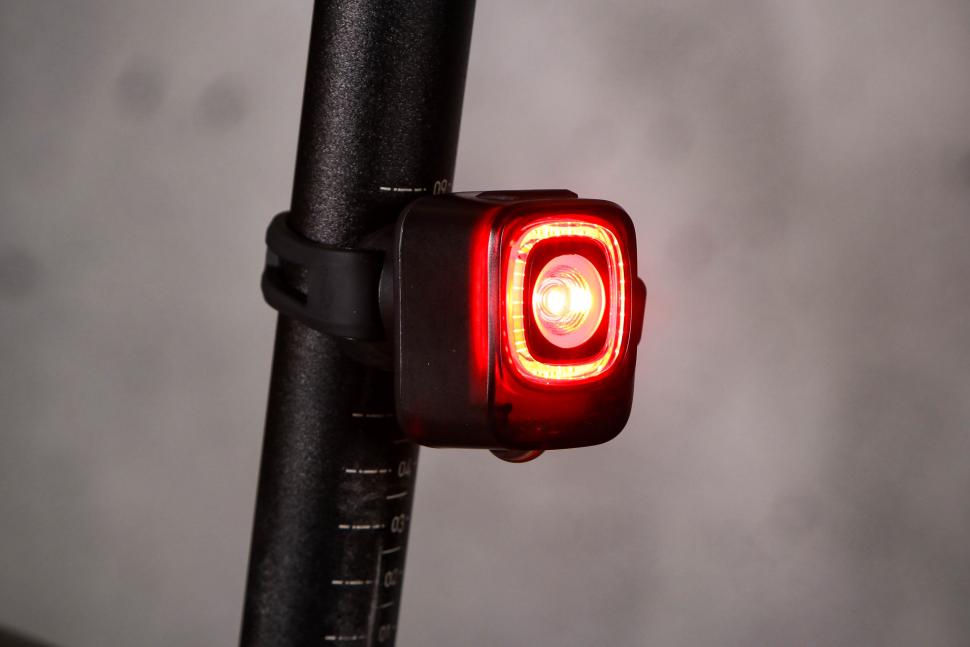 Magicshine Seemee 200
Magicshine Seemee 200 £38.99
VERDICT:
Genuine improvements in battery life in 'braking' mode and general usability make this a winner
Bright but sensible output
Tracing lens gives 360° 'floodlight'
Good weatherproofing
Sensible run-times
Quick charging
Though considerably improved, the 'braking' function will still dent run-times
Weight:
40g
Contact:
At road.cc every product is thoroughly tested for as long as it takes to get a proper insight into how well it works. Our reviewers are experienced cyclists that we trust to be objective. While we strive to ensure that opinions expressed are backed up by facts, reviews are by their nature an informed opinion, not a definitive verdict. We don't intentionally try to break anything (except locks) but we do try to look for weak points in any design. The overall score is not just an average of the other scores: it reflects both a product's function and value – with value determined by how a product compares with items of similar spec, quality, and price.
What the road.cc scores meanGood scores are more common than bad, because fortunately good products are more common than bad.
- Exceptional
- Excellent
- Very Good
- Good
- Quite good
- Average
- Not so good
- Poor
- Bad
- Appalling
The Magicshine SeeMee 200 V2 is an updated and improved version of the innovative and generally likeable light I tested back in 2020. The braking function has been revised and refined, and reducing the number of modes from eight to five means it feels less cumbersome to use. (If you're looking for a light without the braking function, check out our guide to the best rear bike lights.)
A cursory inspection suggests there's little to differentiate the V2 from its predecessor, right down to size. However, Magicshine has kept the good stuff (and improved upon much of it), while trimming the fat.
> Buy now: Magicshine SeeMee 200 V2 for £38.99 from Magicshine
I liked the original's range of modes, but three constant, four flashing and one smart mode is arguably too much choice. The V2 has two constant, two flashing and the smart mode (day and night), which makes life a lot simpler.
As before, sensors detect motion/deceleration for the braking function, and ambient light so output is automatically tuned to suit the conditions – the highest, for greatest presence on bright, sunny days, for example.
The braking function has also become more nuanced. Whereas the original would automatically deliver 200 lumens, the V2 becomes progressively more intense to denote slowing down more obviously.
You can engage and disengage the braking function manually. To turn it off, press and hold the power button for three seconds before turning the light itself on; to turn it on, first turn on the light, then press and hold the power button for three seconds. How do you know if it's on or off? If it's on, the power button will light up blue for three seconds when you turn the light on.
Magicshine has also kept some useful features from the original, including the memory function (a half-second press of the power button turns the light on to your last setting) and the auto kickdown to conserve power and ensure you don't get plunged into darkness when reserves dwindle to around 5% (the braking function is automatically disengaged, too).
Output & modes
As well as the main light, which features a large central diode flanked by lots of tiny counterparts, the Seemee 200 has a 60-lumen 'tracing' lens that points downwards and projects a 360-degree floodlit arc designed to illuminate the road's surface around you, the idea being that it offers greater presence and encourages more courteous passing distances.
The tracing lens has an optical sensor that means it only comes on at night (or during the day if you're riding in a tunnel or underpass or the like and the light is in Smart Day mode).
While the headline output of the light is 200 lumens, this refers only to the braking and daylight flash modes. That's fine by me – I'd struggle to find a situation outside of these contexts, even on the darkest of roads, where 200 lumens would be practical.
The main light's two constant modes are Low (10 lumens) and High (60lm), Flash is 60lm, and Group Ride/Eco is a sensible 10lm.
Smart Day, as I said, is up to 200 lumens, and Smart Night ranges between 10 and 60 lumens.
In my experience while testing, the sensors are very responsive and reliably tune output to suit conditions – something I've noticed across Magicshine's range. It's very responsive to subtle changes in lighting, responding almost seamlessly when entering a tunnel or underpass, for example, putting out more or less light as needed.
I've been suitably impressed by the full 200-lumen day flash, too. It's quick and distinctive – a trucker making farm deliveries in the early hours after dawn reckoned they could spot it from 750 metres away.
Even the 10-lumen mode is quite effective, although a little modest for the middle of nowhere, but still adequate to glide home on, and great for town.
The 60-lumen outputs seem more than potent enough for the darkest nights, especially in flashing, with the tracing light's flood in tandem. I've been particularly keen on this, with it tethered to the trailer. Friends reckoned they could spot me from at least 500 metres, even on dark, cloudy nights.
The 260-degree projection from the main light means decent peripheral punch, although after dusk I've felt more comfortable entering flows of traffic in flashing rather than steady modes.
I've also felt confident enough defaulting to the smart night mode and allowing that to select the best output.
The braking function is also now much more efficient, on average cutting 20 minutes from cited run-times. It does still engage on the climbs when momentum typically drops. This is most obvious when I've been creeping along with the trailer and payloads of 10 kilos plus. Even then, the auto kick-down has saved the day, so I've always felt comfortable about making it back without bother.
Run-times
Run-times are varied but impressive for the output, and very faithful to those cited – within a few minutes (with the braking function disengaged).
The main light in low/constant is reckoned to return 27hrs without the tracing light, 4hrs 50mins with; high/constant 3hrs 40mins (5hrs in daylight/without tracing light); 60-lumen flashing is 17hrs (day) and 10hrs 50mins (night, with tracing light); Group Ride/Eco 50hrs (day) and 6hrs 30mins (night); Smart Day 26hrs; and Smart Night 4hrs 30mins.
Helpfully, Magicshine explains its testing contexts, which follow ANSI/NEMA FL1-2009 standard, meaning room temperature at 25 degrees with 25kmph wind – which will also explain why run-times aren't uniform in the 'real world' of other temperatures and conditions.
This is particularly clear when it comes to braking functions. Gradients, volume of traffic, gearing and payloads can have a pronounced influence, which is another reason I appreciate the choice of disengaging them, especially over long distances with regular climbs.
Charging
Charging times are fairly rapid – cited as 1hr 30mins from a 5V source (laptop or similar). I wasn't surprised to find it fully juiced in 1hr 15mins at the mains, and taking just over three from my dynamo's USB.
Lithium-ion batteries respond best to regular charging, by the way, rather than being depleted too often.
The switch's integrated battery life indicator is effective enough, going from green to red, to flashing red when it's about to plunge into eco mode. And when you power up or down you can see how much charge remains.
Build quality
The cube-shaped body is well sealed from the elements, meeting IPX6, and the micro-USB charge port also features a snug-fitting cover, minimising exposure to wet, nasty stuff – even if you forgo mudguards.
I still run the original Seemee200 regularly and in all weathers and it's still going strong, and the V2 seems slightly better sealed from the elements. Provided you're not bog snorkelling, or subjecting it to a pressure washer, there's no reason it shouldn't last.
The light is also designed to withstand being dropped onto a hard surface from one metre, which is reassuring.
Mounts
Magicshine has kept the rubbery 'watch strap' type mount, which offers limpet-like tenure to post diameters between 25.4 and 31.8mm, relatively thin seatstays and box section tubing.
There's also a saddle rail mount if you're seeking a super sleek aesthetic, and spares can be bought separately for £7.99, for swapping the light quickly between bikes, say.
Value
Rear lights with braking functions are still relatively niche, so there aren't that many to compare the Seemee 200 V2 with, but even though it isn't the cheapest, it does seem to offer a little more for the money.
At £38.99, it's £5 more than its predecessor, and it's £10 and £12 more than two options from Sigma.
The Sigma Blaze Rear Brake Light that Iwein tested in 2021 is a simpler option, with just one steady mode and a braking function, for £27.99, though it's less potent than the Seemee 200, and for just another £2, the Sigma Blaze Flash Rear Brake Light offers four modes for £29.99.
The Ravemen CL06 is also slightly cheaper at £32.99. It's solidly made, with a good range of modes and a braking setting, though when testing it, Steve felt this function was a little too sensitive.
The Lezyne Strip Drive Alert is one that's more expensive than the Seemee 200, at £43, and has extrovert flashing modes and a higher waterproof rating, but Stef felt the 'brake light' function didn't add much to the package, and the battery life wasn't great.
Conclusion
Magicshine has revised the Seemee 200 V2 for the better. The price has crept up slightly, but fewer modes have made it simpler and more user friendly without compromising output; the tracing light is by far the most effective I've experienced; and though not perfect, the braking function is greatly improved and doesn't put a massive dent in run-times.
Verdict
Genuine improvements in battery life in 'braking' mode and general usability make this a winner
road.cc test report
Make and model: Magicshine Seemee 200 V2
Size tested: 200 lumens max
Tell us what the light is for, and who it's aimed at. What do the manufacturers say about it? How does that compare to your own feelings about it?
Magicshine says: "Most powerful model in the Seemee bike tail light series, the Seemee 200 has a super bright main light and a secondary area light, providing optimal visibility for urban and road cyclists."
Tell us some more about the technical aspects of the light?
Magicshine lists:
200 lumens max main light, 140 lumens consistent, 260 degrees wide visibility from behind the rider, visible from more than 2 miles away
360 degrees visibility secondary area light, forming a circle of light under the rider
Brake Sensor: 200 lumen brake light that lasts 3 seconds(heavy on battery usage, press and hold power switch for 5 seconds to turn this feature on/off)
Ambient Light Sensor: Auto adjusts light mode and output depending on ambient light conditions(only in smart mode)
Low power mode: Power saving flash mode triggered automatically at 5% battery and lasts 20 min
Memory function: Saves the last mode used when the the light was turned off
3 brightness modes and 4 flash modes(double press to change modes, single press to cycle options)
2.5 – 50 hours runtime depending on mode
40 g in weight
USB rechargeable(battery non-replaceable)
Seat post mount and saddle rail mount
IPX6 Waterproof
Rate the light for quality of construction:
8/10
Seems very solid and IPX6 rating is good.
Rate the light for design and ease of use. How simple was the light to use?
7/10
Generally straightforward. However, it's worth getting to grips with the braking function.
Rate the light for the design and usability of the clamping system/s
9/10
Simple, stretchy and very reliable in my experience.
Rate the light for waterproofing. How did it stand up to the elements?
9/10
IPX6 and passed my garden hose test with flying colours. No obvious signs of weakness.
Rate the light for battery life. How long did it last? How long did it take to recharge?
7/10
Generally very faithful to those cited, and the braking function is less thirsty now it has been revised.
Rate the light for performance:
8/10
Very good.
Rate the light for durability:
9/10
Very well made and sealed from the elements (plus the original is still in rude health almost two years on).
Rate the light for weight:
8/10
Just 40g.
Rate the light for value:
7/10
It costs more than some, but for the specification and performance it's more than worth the extra, and good value.
Tell us how the light performed overall when used for its designed purpose
Very well.
Tell us what you particularly liked about the light
The smart sensor works very well, and the simplified settings are an improvement.
Tell us what you particularly disliked about the light
Nothing beyond the usual issue of brake functions making run-times hard to predict.
How does the price compare to that of similar products in the market, including ones recently tested on road.cc?
Even though it isn't the cheapest, it does seem to offer a little more for your money than some.
The Sigma Blaze Rear Brake Light that Iwein tested in 2021 is a simpler option, with just one steady mode and a braking function, for £27.99, though it's less potent than the Seemee 200, and for just another £2, the Sigma Blaze Flash Rear Brake Light offers four modes for £29.99.
The Ravemen CL06 is also slightly cheaper at £32.99. It's solidly made, with a good range of modes and a braking setting, though when testing it, Steve felt this function was a little too sensitive.
The Lezyne Strip Drive Alert is more expensive than the Seemee 200, at £43, and has extrovert flashing modes and a higher waterproof rating, but Stef felt the 'brake light' function didn't add much to the package, and the battery life wasn't great.
Did you enjoy using the light? Yes
Would you consider buying the light? Yes
Would you recommend the light to a friend? Yes
Use this box to explain your overall score
This is a powerful light with some tangible improvements over its predecessor. It's very good.
About the tester
Age: 49
I usually ride: Rough Stuff Tourer Based around 4130 Univega mtb Frameset My best bike is: 1955 Holdsworth Road Path and several others including cross & traditional road
I've been riding for: Over 20 years I ride: Most days I would class myself as: Experienced
I regularly do the following types of riding: cyclo cross, commuting, touring, fixed/singlespeed, mtb,
Shaun Audane is a freelance writer/product tester with over twenty-eight years riding experience, the last twelve (120,000 miles) spent putting bikes and kit through their paces for a variety of publications. Previous generations of his family worked at manufacturing's sharp end, thus Shaun can weld, has a sound understanding of frame building practice and a preference for steel or titanium framesets.
Citing Richard Ballantine and an Au pair as his earliest cycling influences, he is presently writing a cycling book with particular focus upon women, families and disabled audiences (Having been a registered care manager and coached children at Herne Hill Velodrome in earlier careers)
Latest Comments
- BikingBud 2 hours 28 min ago
Was there?...
- ChrisA 4 hours 13 min ago
Balance bike: £600 - brakes extra.
- LeadenSkies 4 hours 32 min ago
As a non local who occasionally has to cycle from St Ives to Cambridge, at a sedately average speed of 12mph, I have had to use alternative routes....
- PRSboy 7 hours 58 min ago
I have two aero bikes- an Argon18 Nitrogen and an Orro Venturi. I love the way they feel on the road. I also like the style of the deeper section...
- Rendel Harris 15 hours 35 min ago
They have here: results at 14.40. The aero bike was roughly fifteen seconds faster than a climbing bike on a descent of around 6 km, so about 3km/h...
- wtjs 15 hours 49 min ago
As I've also placed here the nutter Audi and white van drivers, I've decided to give those no-nonsense keep-the-country-moving BMW drivers a list...
- polainm 16 hours 52 min ago
100% this. Policing mentality is formed by social 'norms', and the cyclist witchhunting across social media is the UK norm. Close passing a person...
- David9694 18 hours 17 min ago
That's a clear 2 points awarded there, but I guess as there's now a 25% tariff you'll only get 1.5
- mark1a 18 hours 28 min ago
Fawkes Cycles is only local if you live near Oldham. That's nearly 300 miles away from me. Also, any retailer that doesn't participate in an...
- David9694 18 hours 30 min ago
Openreach under fire over delays to Amesbury cabinet repairs...






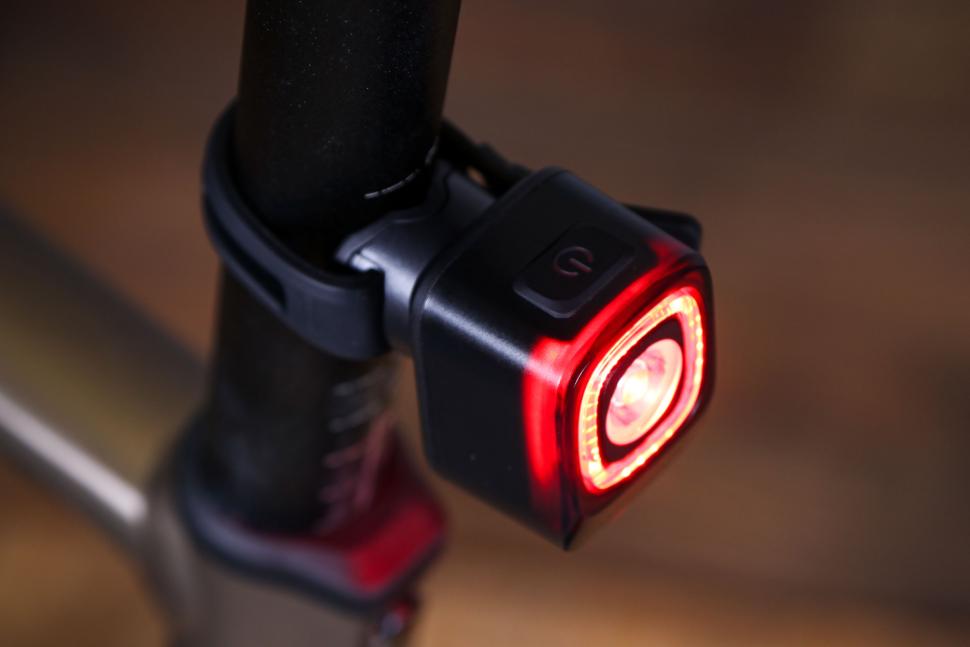
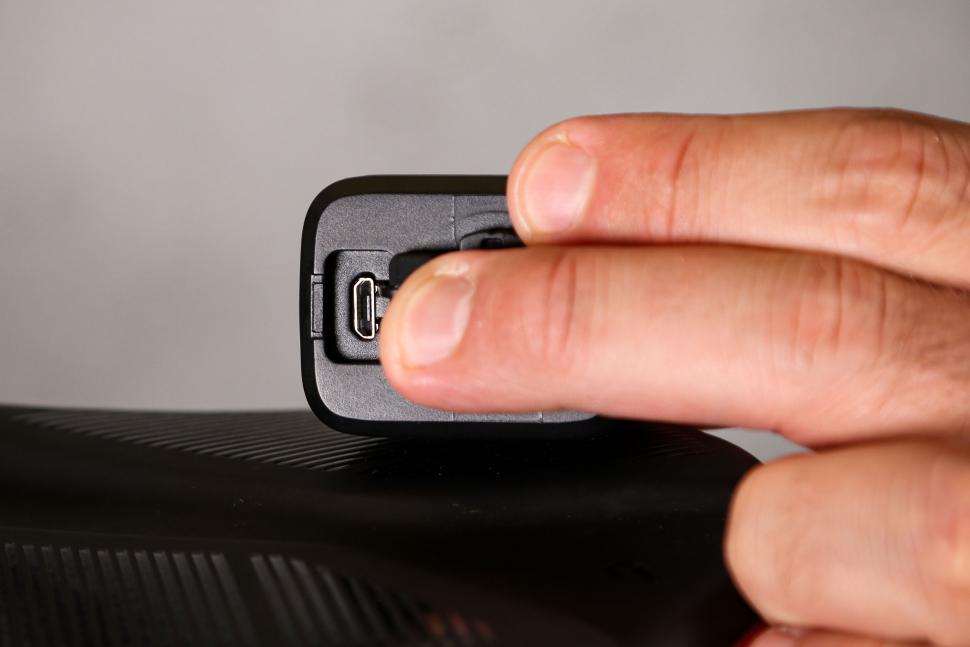


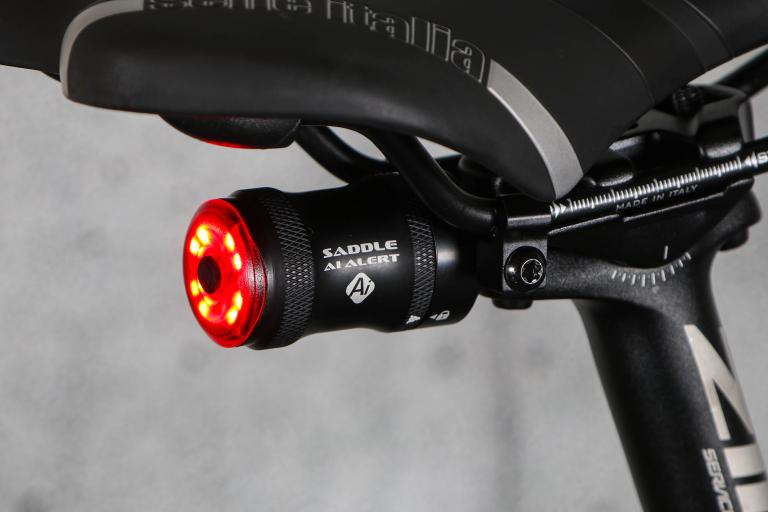
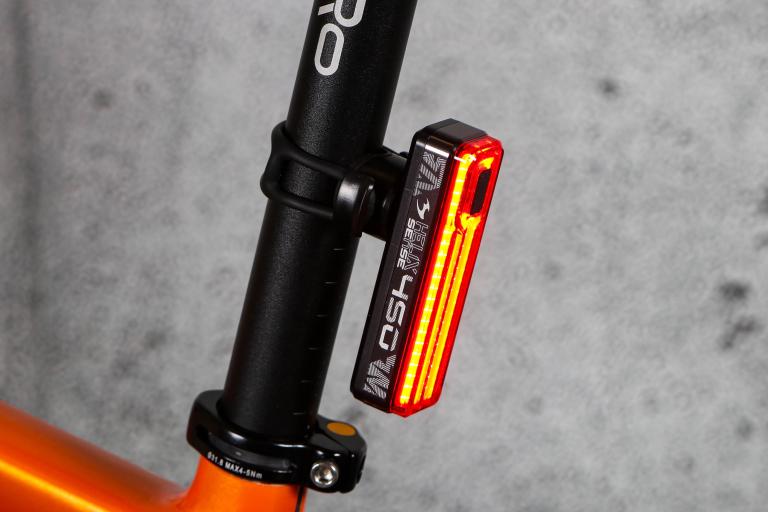
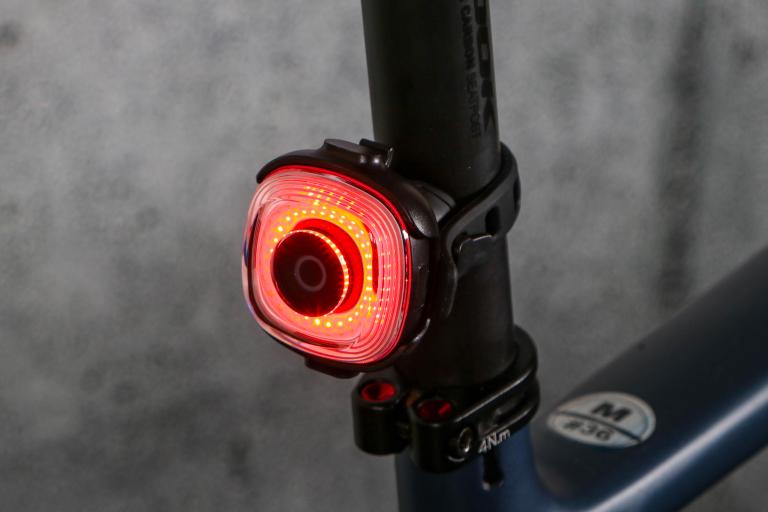
Add new comment
4 comments
A personal bugbear of mine is that a lot of technology these days is rechargeable. Great, I love knowing that I keep my "stuff" fully charged and ready to go when needed. But not so great five years or so later when the lithium batteries are getting a bit tired.
This shouldn't be an issue, but unfortunately, it seems common practice these days to sonically weld housings permanently shut, preventing the possibility to replace the lithium battery. It seems crazy to me that we can spend an absolute fortune on various pieces of technology, only to dispose of it a few years later because the battery is knackered.
It would be great if reviews such as this, would consider the possibility of changing the rechargeable battery when it comes to the end of its useful life. If this became more prominent in reviews, it may just kick the backsides of manufacturers to rethink their production methods. And allow us to keep our expensive technology a good while longer.
Sorry, not buying a new bike light in 2023 that doesn't use usb c charging.
I've the first version of this light.... after using it with "brake" mode on I just set it to "smart" mode and it changes the light output. type and down onto the rear wheel/ground as appropriate..... like I say all the other modes are there....but smart mode does it all.....a ride pal purchased one too and also keeps his light on smart mode.
On the Gravel bike I've gone a bit mad and gone for the Nightrider Omega 300..... mainly for the output as I often nip out from bridleways/byways onto main or busy roads so want to be seen....it's a bit "loud" as in use but no one can say they cant see you....... the Seemee 200 is a much "kinder" light but very effective
no one can say they can't see you.......
Oh yes they can, and will, and it will be accepted by all including the police and the courts. That's unless they claim the light was too bright, so they had to put the foot down 'to get out of danger'- you know, like they do with the sun